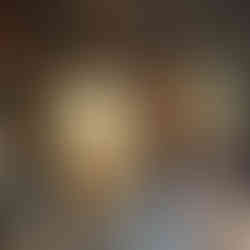Artist Interview Series: Veronica Verkley’s animals
- Art Vancouver
- Dec 20, 2021
- 3 min read

Veronica Verkley has a lifelong fascination with animals. It influenced her art career early on, beginning with drawings and sculptures as a child and into her professional life today.
But it is more than the impressive beauty of the animal that captivated her; it was the power of their movement and the gesture of the form where her interest lies.
“Very early on, I got into depicting motion more—like depicting motion with motion,” Veronica says. “So, I did flipbooks, stop-motion animation, and then with sculpture working with animatronics and using motors, air cylinders and hydraulics or puppeteering to get things to move.”
Her work encompasses the animal in all its forms of mobility, showcasing through drawing, sculpture, installation, animation, animatronics and puppetry.
While studying at York University, Veronica was already picking up work as an artist. People would approach her with a project, and she would work to discover how to do it.
And this led her to film and an early career projection out of university.
“I just kind of fell into the animatronics thing,” she says. “Started working in film and all of the gigs that came my way had to do with animals and movement, which was my jam.”
When she started in film, animatronics was growing. It was her job to construct an animal for a film and have it move in a very specific way.
“How do you make something move? Well, a motor moves, so how can you get this circular motion of a motor to make this leg move in a linear way. How it translates circular motion into linear motion. So, you just figure that stuff out on the fly. ‘Well, I’ve got three weeks to do this. Better get going.’”

Veronica has worked on numerous film projects in her career, too many to name. And that may have been it if it was not for a job being delayed and finding herself with time on her hands.
“My first taste of the Yukon, I was in Toronto. There was a heatwave in the summer, and I was about to start a big film project that was going to take many months. And then it got delayed by four weeks or something. And I thought, ‘Well, I’m not going to take another job on while I’m waiting for that job. So, I’m just going to relax until this big job starts. And I may as well relax somewhere else than here.”
But when Veronica travelled to the Yukon in 2001, she had no idea it would begin a love affair with the Canadian territory, its beauty and its people.
She kept finding reasons to go back. Whether it was an artist residency or a collaborative project, the geography called to her.

And it all began with a map, closed eyes and her finger.
“I literally got a map, like a paper map of Canada,” Veronica says. “And put it on the table, smoothed it out and then closed my eyes and pointed. And my finger landed on the Yukon. And I thought, ‘Well, I bet they have coffee up there.’”
She found that coffee shop. The people she met there are still friends of hers to this day.
“I kept finding reasons to go back to the Yukon because I liked it there. So, I did a couple of residencies there. And I worked on a theatre project. And I did different things and ended up getting really familiar with it and knowing, you know, being connected to the arts community there.”
Part of this community involvement included being one of the founding faculty members of the Yukon School of Visual Arts in Dawson City where she taught for 10 years.
As rewarding as teaching is, it left little time and energy for Veronica’s own art. Returning full-time to her own art is rewarding and allowed her to refocus and dedicate the time and energy that her largescale projects require.

“I tend to do projects that take a long time to do. I’m not like someone who’s a painter and maybe can whip up a painting in a day or a week or something. My projects always take many months to do. So, I just needed those months and those years to work on things.”
And now she looks forward to the next challenge, to the next idea. But it will not take her long.
“I always have art projects on the backburner. Like in my head or in my sketchbook, things I want to start working on.”
By Nathan Durec








